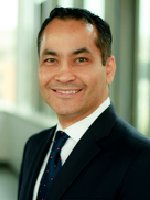Nano- and Microfabricated Hydrogels for Regenerative Engineering
Engineered materials that integrate advances in polymer chemistry, nanotechnology, and biological sciences have the potential to create powerful medical therapies. Our group aims to engineer tissue regenerative therapies using water-containing polymer networks, called hydrogels, that can regulate cell behavior. Specifically, we have developed photocrosslinkable hybrid hydrogels that combine natural biomolecules with nanoparticles to regulate the chemical, biological, mechanical and electrical properties of gels. These functional scaffolds induce the differentiation of stem cells to desired cell types and direct the formation of vascularized heart or bone tissues. Since tissue function is highly dependent on architecture, we have also used microfabrication methods, such as microfluidics, photolithography, bioprinting, and molding, to regulate the architecture of these materials. We have employed these strategies to generate miniaturized tissues. To create tissue complexity, we have also developed directed assembly techniques to compile small tissue modules into larger constructs. It is anticipated that such approaches will lead to the development of next-generation regenerative therapeutics and biomedical devices.
Biography
 Ali Khademhosseini is Professor of Bioengineering, Chemical Engineering and Radiology at the University of California-Los Angeles (UCLA). He is the Founding Director of the Center for Minimally Invasive Therapeutics at UCLA as well as an Associate Director of the California NanoSystems Institute. He joined UCLA in Nov. 2017 from Harvard University where he was Professor of Medicine at Harvard Medical School (HMS) where he directed the Biomaterials Innovation Research Center (BIRC). . He is recognized as a leader in combining micro- and nano-engineering approaches with advanced biomaterials for regenerative medicine applications. In particular, his laboratory has pioneered numerous technologies and materials for controlling the architecture and function of engineered vascularized tissues. He has authored ~550 journal papers (H-index >100 & >39,000 citations) and 60 books/chapters. In addition, he has delivered 300+ invited/keynote lectures. Dr. Khademhosseini’s interdisciplinary research has been recognized by over 40 major national and international awards. In 2016, he received the Sr. Scientist Award of Tissue Engineering and Regenerative Medicine Society -Americas Chapter (TERMIS-AM) and in 2017 he received the Clemson Award of the Society for Biomaterials. He is also a fellow of AIMBE, Materials Research Society (MRS), Biomedical Engineering Society (BMES), Royal Society of Chemistry (RSC), Fellow of the Biomaterials Sciences and Engineering (FBSE) and American Association for the Advancement of Science (AAAS). Currently he serves on the editorial board of numerous leading journals as well as an Associate Editor for ACS Nano (IF: 13.3). He received his Ph.D. in bioengineering from MIT (2005), and MASc (2001) and BASc (1999) degrees from University of Toronto both in chemical engineering. Read more at: http://www.tissueeng.net/lab
Ali Khademhosseini is Professor of Bioengineering, Chemical Engineering and Radiology at the University of California-Los Angeles (UCLA). He is the Founding Director of the Center for Minimally Invasive Therapeutics at UCLA as well as an Associate Director of the California NanoSystems Institute. He joined UCLA in Nov. 2017 from Harvard University where he was Professor of Medicine at Harvard Medical School (HMS) where he directed the Biomaterials Innovation Research Center (BIRC). . He is recognized as a leader in combining micro- and nano-engineering approaches with advanced biomaterials for regenerative medicine applications. In particular, his laboratory has pioneered numerous technologies and materials for controlling the architecture and function of engineered vascularized tissues. He has authored ~550 journal papers (H-index >100 & >39,000 citations) and 60 books/chapters. In addition, he has delivered 300+ invited/keynote lectures. Dr. Khademhosseini’s interdisciplinary research has been recognized by over 40 major national and international awards. In 2016, he received the Sr. Scientist Award of Tissue Engineering and Regenerative Medicine Society -Americas Chapter (TERMIS-AM) and in 2017 he received the Clemson Award of the Society for Biomaterials. He is also a fellow of AIMBE, Materials Research Society (MRS), Biomedical Engineering Society (BMES), Royal Society of Chemistry (RSC), Fellow of the Biomaterials Sciences and Engineering (FBSE) and American Association for the Advancement of Science (AAAS). Currently he serves on the editorial board of numerous leading journals as well as an Associate Editor for ACS Nano (IF: 13.3). He received his Ph.D. in bioengineering from MIT (2005), and MASc (2001) and BASc (1999) degrees from University of Toronto both in chemical engineering. Read more at: http://www.tissueeng.net/lab
